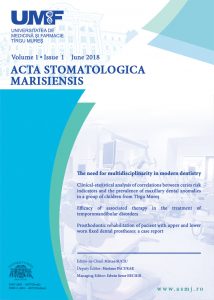Periodontal disease, which begins as superficial inflammation of the gingiva without attachment or bone loss (gingivitis) and later progresses to attachment loss with subsequent bone destruction (periodontitis), is one of the leading infectious diseases known to mankind. Results from a national survey conducted in the United States in 2010 analyzing the distribution of the disease found that over 47% of the adult population was affected [1]. Furthermore, 38.5% of the population had either moderate or severe forms of periodontitis, which are more difficult and cost-intensive to handle due to the advanced loss of the tooth’s supporting apparatus and subsequently resulting niches that make infection control challenging [1]. Thus, it becomes vital for healthcare providers to diagnose the disease as early as possible and provide appropriate treatment. It has been extensively documented that periodontal infections can be successfully treated by non-surgical and surgical periodontal therapy associated with meticulous oral hygiene.
Richard J. Miron 1, Anton Sculean 1
1 School of Dentistry, University of Bern, Switzerland
1 School of Dentistry, University of Bern, Switzerland

Comments are closed.